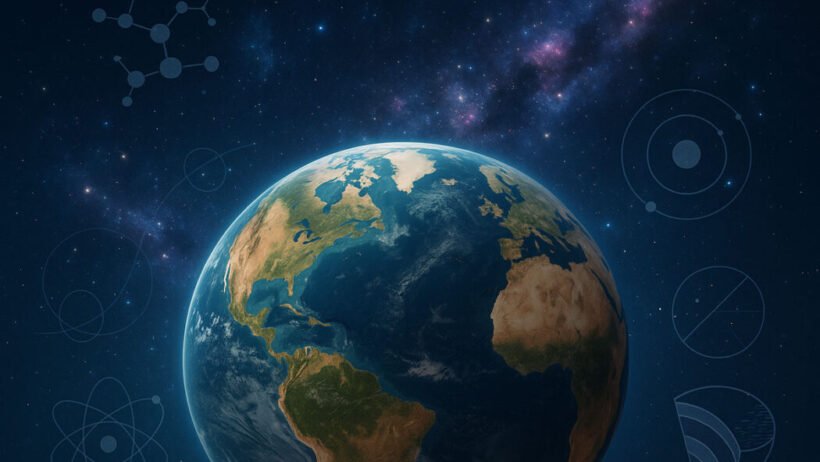Introduction: Navigating Your Science Journey
Why This Guide Matters
Jumping into the Edgenuity Earth and Space Science course can feel like launching into a new galaxy. The platform is built to be tough, and sometimes, you might feel like you’re searching for a guiding star in a vast universe of information. If you’ve ever been stumped by an interactive lesson or a tricky project, you’re definitely not alone. Many students are looking for a little help to get through this packed curriculum.
Think of this guide as your trusted co-pilot on this academic mission. It’s not just a cheat sheet of quick fixes; it’s a full-blown resource to help you get the hang of the Edgenuity platform, truly understand the science, and find strategies that actually work. This is your mission control, giving you the tools you need to do more than just finish your coursework—it’s here to help you ace it.
Understanding the Edgenuity Platform
What is Edgenuity?
So, what’s the deal with Edgenuity? It’s an online learning platform that uses a dynamic and interactive style to teach. It gives you the flexibility to learn at your own speed, which is great for mastering a ton of different subjects. The courses are designed to be genuinely engaging, using all sorts of multimedia to help you learn in a way that clicks for you.
Key Features of the Earth and Space Science Course
The Edgenuity Earth and Space Science course is a powerhouse program that brings the cosmos right to your screen. It’s packed with a mix of interactive simulations, hands-on projects, and rich media content. You’ll get to do everything from exploring the rock cycle in a virtual lab to building your own model of the Earth’s layers.
These aren’t just busy work; they’re designed to give you a real, hands-on feel for the science that goes way beyond just memorizing facts. The whole point is to help you think like a scientist and apply what you learn to the world around you. With expert teachers guiding you on-screen, you’ve got a ton of knowledge right there when you need it.
How Your Grade is Calculated
Knowing how you’re graded is a game-changer for any course. In Edgenuity Earth and Space Science, the grading is set up to check your understanding from a few different angles. It’s a fair system that rewards you for staying consistent and really getting to grips with the big ideas.
Here’s a typical look at how your grade breaks down:
- Assignments: 10%
- Lesson Quizzes: 20%
- Unit Tests: 50%
- Cumulative Exams: 20%
That 50% for unit tests is a big deal, so you’ll want to be ready for those. But don’t sleep on the assignments and quizzes—they add up and make a real difference.
Proven Strategies for Academic Success
Create a Consistent Study Schedule
One of the biggest secrets to winning at online courses is locking in a solid study routine. It’s way too easy to put things off, so carving out specific time for your coursework each day is a must. Treat it like a real class and set a schedule you can actually live with.
This habit doesn’t just keep you from falling behind; it also saves you from the stress of all-night cram sessions. A good plan lets you learn at a chill pace and gives you plenty of time to review before you have to face those quizzes and exams.
Leverage All Available Resources
Edgenuity gives you a ton of resources, so make sure you use them. The platform has videos, interactive simulations, and eNotes that are perfect for breaking down tough topics. Don’t be shy about using these tools to lock in what you’ve learned.
And don’t stop there. Look outside the platform, too. Websites like Khan Academy and NASA’s official site are goldmines of articles, videos, and animations that can give you a fresh take on the material. Mixing and matching these resources can seriously boost your understanding.
The Smart Way to Use ‘Edgenuity Earth and Space Science Answers’
Let’s be real: a lot of students are Googling “Edgenuity Earth and Space Science answers.” While it’s tempting to grab a quick fix, the smartest way to use these resources is for checking your work. Think of it as a way to see where you went wrong after you’ve given the problems an honest shot yourself.
Just copying answers won’t get you far, especially when it’s time for the big proctored exams. Instead, use them to figure out your mistakes and understand the right way to get to the solution. This keeps your academic integrity intact and helps you build a rock-solid understanding that will actually help you in the long run.
Core Concepts in Earth and Space Science
Unearthing Geology: From Minerals to Magma
The Earth and Space Science course takes you deep into the world of geology. You’ll get to know the building blocks of our planet, from the unique properties of minerals to how magma forms deep inside the Earth. Getting these core ideas down is key to understanding the bigger picture of how our world works.
You’ll dive into the rock cycle and see how different rocks are formed and change over millions of years. You’ll also get into plate tectonics and see how the Earth’s moving crust leads to everything from earthquakes to mountain ranges. These are the big ideas that explain our planet’s incredibly dynamic story.
Exploring the Cosmos: Galaxies, Black Holes, and the Big Bang
This course doesn’t just stick to Earth; it launches you into the vastness of space. You’ll get a handle on the difference between a solar system and a galaxy and even wrap your head around the wild concept of black holes. These topics can be a bit mind-bending, but they give you a peek into the incredible size and complexity of our universe.
The course also tackles the Big Bang theory, the leading scientific explanation for how the universe began. By getting a grip on these huge astronomical ideas, you’ll gain a new appreciation for our little spot in the cosmos and the ongoing human quest to figure it all out.
Tackling Major Assignments: The Earth’s Layers Project
A Step-by-Step Approach to Ace the Project
The Earth’s Layers Project is a classic assignment in this Edgenuity course, and it can be a bit of a beast. It asks you to build a model of the Earth’s layers and explain what they do. Having a clear plan of attack can make all the difference.
First, do your homework. Use your Edgenuity lessons and other solid sources to get the facts on the crust, mantle, outer core, and inner core. Then, get creative and build your model—clay or playdough works great for showing the different layers. Finally, write up a simple, clear explanation of what each layer is and what it does. And a pro tip: run it by your teacher for feedback before you turn it in.
Looking Ahead: What’s New in 2025?
AI-Powered Feedback and Interactive Models
Edgenuity isn’t standing still; it’s always updating to make learning better. In 2025, you can look for some cool new features, like AI-powered feedback on your writing. This tech will give you instant, personalized tips to help you become a stronger writer and thinker.
On top of that, the platform is rolling out more interactive 3D models, which will be a game-changer for projects like the Earth’s Layers assignment. These models will let you explore complex stuff in a much more intuitive and hands-on way. These updates are all about making your learning experience more supportive and engaging.
Conclusion: Your Path to Mastery
Beyond Just the Answers
Getting through the Edgenuity Earth and Space Science course is about so much more than just finding answers. It’s about building a real understanding of the world and universe we live in. It’s also about developing the skills you’ll need for college and whatever comes next.
If you approach your studies with curiosity and a bit of discipline, you can turn this tough course into a seriously rewarding experience. The knowledge you gain and the problem-solving skills you build will stick with you long after the final exam. So, embrace the challenge, and get ready to explore the wonders of Earth and space.








